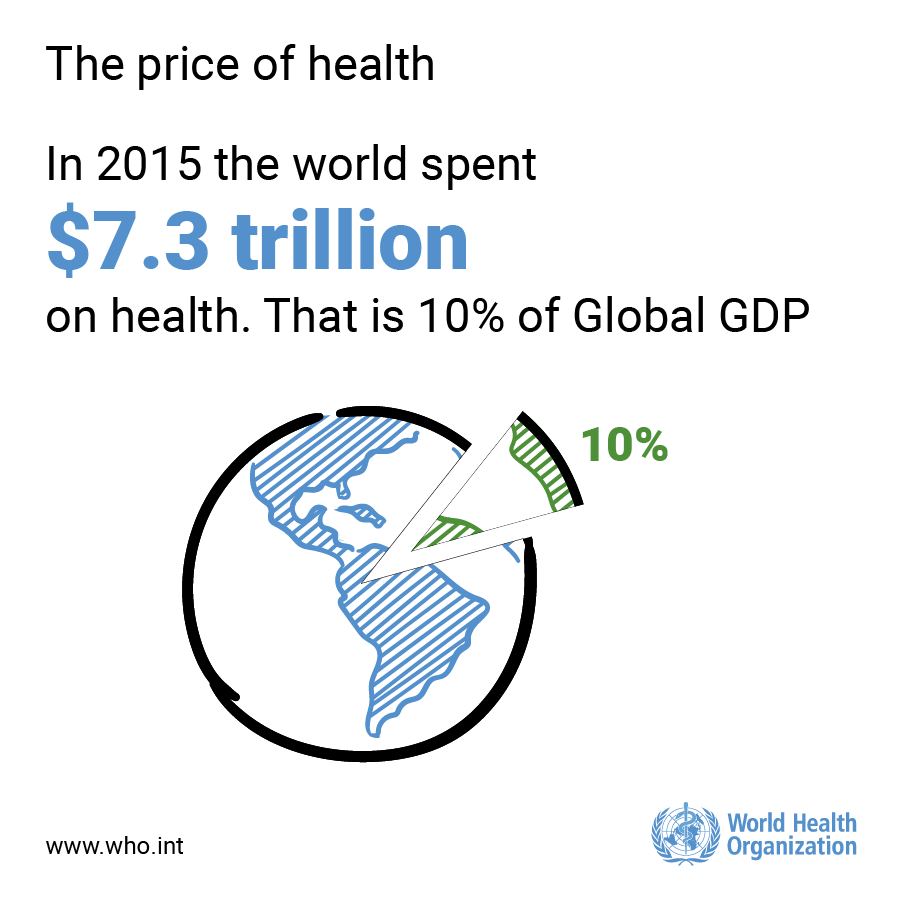During the UHC Forum held in Tokyo from 12-15 December 2017, WHO released new health expenditure estimates for the period 2000 to 2015 through its Global Health Expenditure Database (GHED). The database includes more than 190 WHO Member States and is now consistent with the new system of health accounts (SHA 2011). The new classifications include data on financing arrangements (schemes) and their revenue sources, and as a result offer the potential for deeper policy relevant analysis and insights to be made. Some of the key findings of the report include:
1. In 2015, the world spent 7.3 trillion on health, representing close to 10% of global GDP. Health expenditure is growing faster than the overall economy and has expanded fastest in low and middle-income countries at an average annual rate of 6% between 2000 and 2015. Health is the third largest economy after the US and China.
2. The global average health expenditure per capita is 1,011 USD but half of the world’s countries spent less 366 USD per capita. In 2015 close to 50 countries with population of 2.7 billion spent less than 100 USD per capita on health. Health spending worldwide remains very unequal: 80% of the world’s population live in middle income countries but only account for less than 20% of global health expenditure.
3. Domestic finances are the dominant source of funding for health in all countries. Development assistance for health amounted in 2015 to just over USD 19 billion, or less than 0.3% of global health expenditure. But it remains important for low-income countries. In 2015 the average share of external resources to health spending in the 31 low-income countries was around 30% of health expenditures.
4. Public funding has increased slightly over the past 15 years from an average of 48% to 51% of current health spending in middle-income countries and from 66% to 70% in high-income countries. In low-income countries domestic government sources have declined from 30% to 22% as aid increased from 20% to 30%.
5. Today people pay less out-of-pocket for health than 15 years ago. The average share of out of pocket spending has fallen across all country income groups. In 2015, there were 1 billion fewer people living in countries where out-of-pocket spending is greater than 50% of health expenditure.
6. There are more than 100 countries reporting expenditures through social health insurance in 2015. There are a large number of middle- and higher-income countries in which budget transfers to social health insurance play a significant role in health financing, representing 20–50% of SHI spending.


